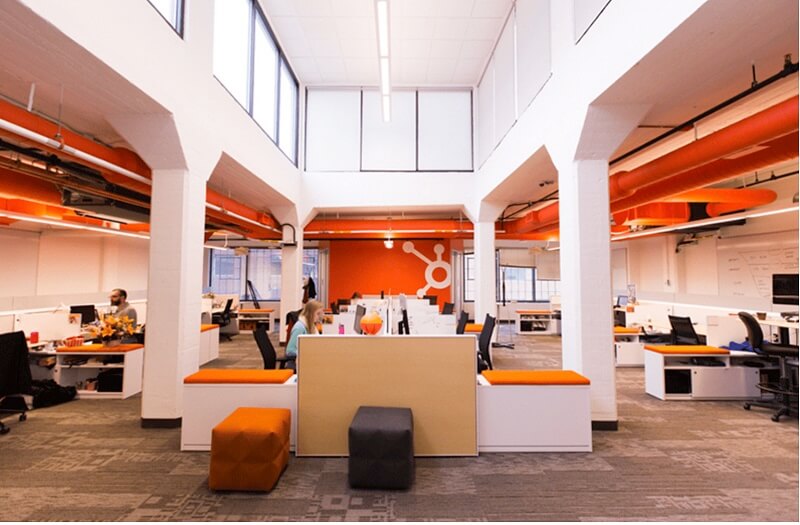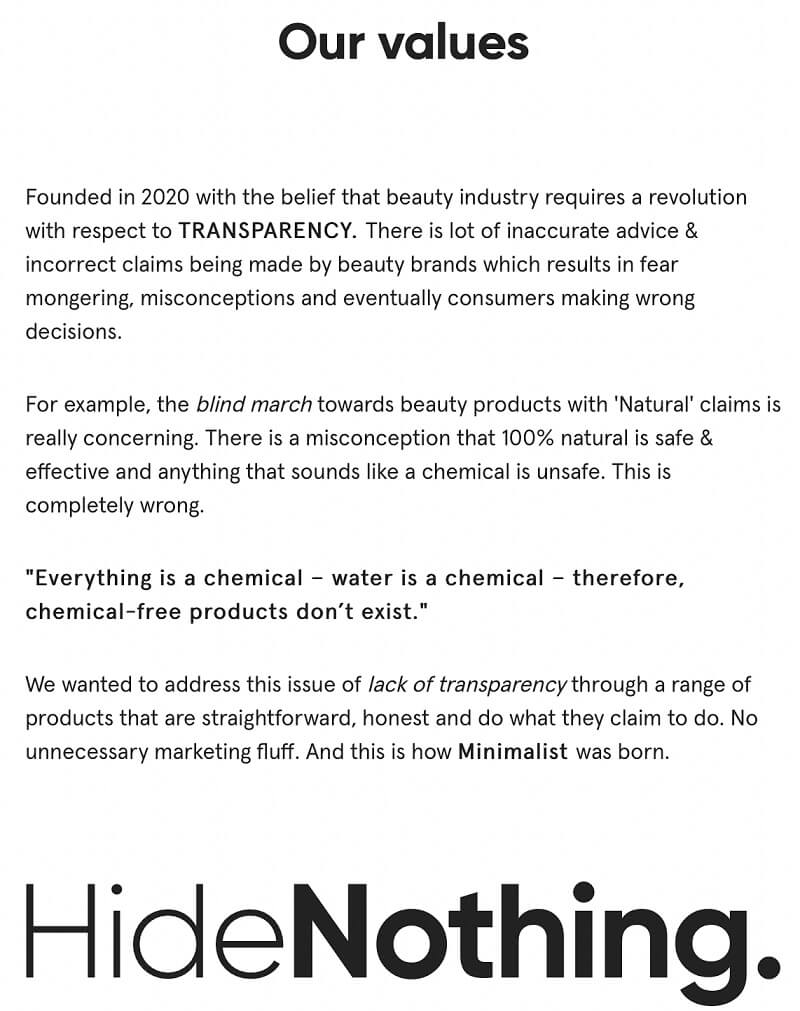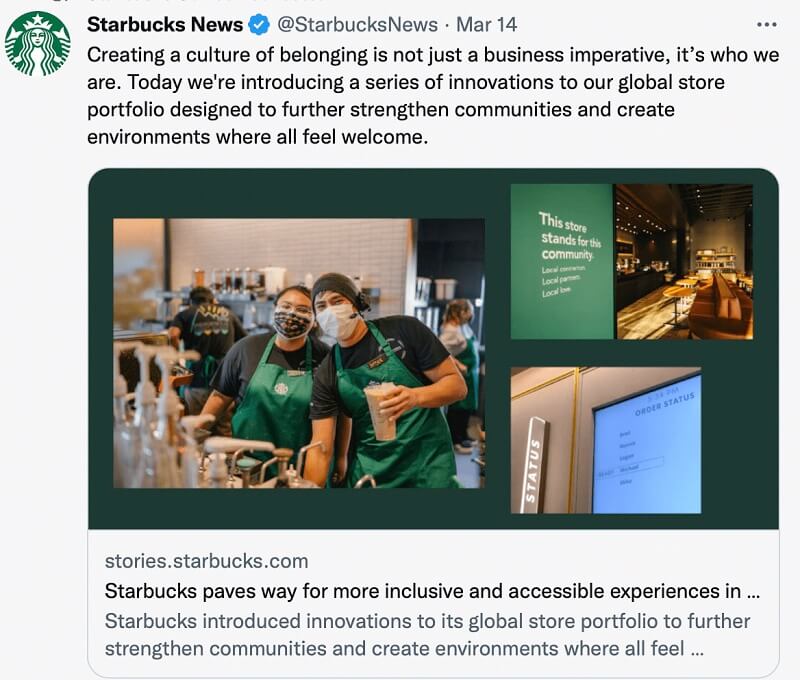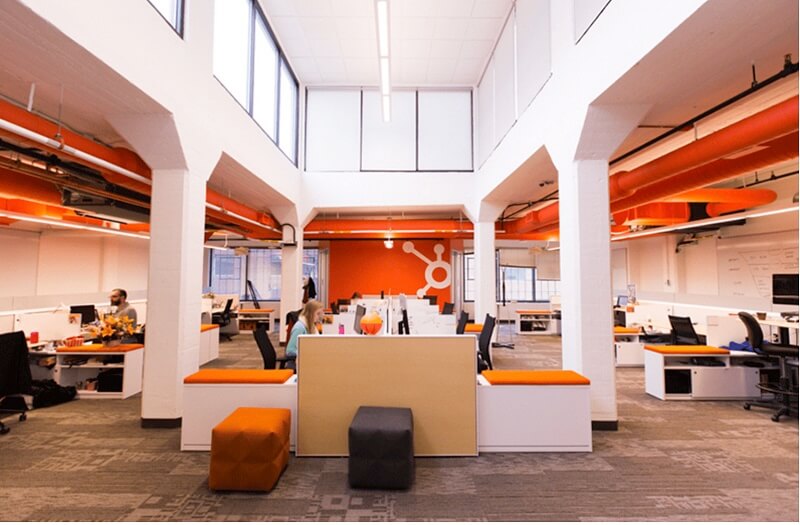
Hey guys, today in this blog post, we will discuss the top 5 top office design elements that underpin your corporate brand strategy. So keep reading.
Present-day companies know which end is up when carving out their product brands to make them recognizable at a glance. Think how consistently the green Starbucks logo speaks for itself no matter what part of the world you’re in.
However, when it comes to corporate branding, organizations often need clarification about how they will market an intangible entity like brand personality.
One effective way to bring your brand identity to life is office branding. Office space or workplace branding is all about embodying your mission, vision, and core values into the design aspects of the office.
So, without much ado, let’s open your mind to leveraging workplace design as a crucial cog in corporate branding.
What Does Corporate Branding Mean? Why Is It So Important?
Corporate branding refers to your brand positioning. It typically represents your brand’s voice and message and ultimately impacts how your customers, people, and other stakeholders perceive your organization.
For example, the new trendsetter in the beauty industry is Minimalist. Its tagline, “Hide nothing,” reflects the company’s belief in transparency and honesty. Not to mention the no-frills approach to the overall packaging and design.

Your corporate branding is constantly changing with every customer engagement. It is impacted by how your employees communicate your brand values with customers, the image of your products or services in the consumer’s mind, and your physical and digital presence.
What Makes Corporate Branding So Important?
To give you some reasons to prioritize corporate branding, we’ve rounded up the most powerful benefits of corporate branding. Have a look.
- Successful corporate branding ensures that your executives and teams are on the same page regarding understanding the company’s vision. It helps them work in synergy toward achieving the same goal.
- It makes your brand more relatable to customers who start seeing it as more than a business. Such customers are far more likely to feel connected, advocate for your brand, and eventually become your marketers.
- Corporate branding increases awareness about your company, making it easier for consumers to recall your brand and its products.
- It underpins marketing campaigns. Digital marketers have an easy time promoting you on social media, commercials, and other communication platforms. A consistent tone tied to your brand personality helps you create unique content and helps improve conversion rates.
Now, let’s discuss the dark horse of corporate branding – Office design.
Often, businesses are majorly invested in branding their logos, business cards, websites, and social media, as part of their corporate branding strategy. And rightfully so. These aspects have a significant role in the creation of a strong brand.
But now it’s time to see much-overlooked workplace design in a new light – as an extension of your brand.
Office branding is the art of shaping your physical workplace to reinforce company culture and demonstrate brand philosophy through decor and design elements. Done right, it can positively impact a brand’s connection with employees and customers.
How to Make Office Design Communicate Your Brand?
1. Let Your Brand Culture Reflect in the Office Layout
How an office layout is planned should be directly influenced by the brand culture it strives to represent.
A forward-thinking company can demonstrate its openness to collaboration and innovation by adopting an open office plan. Conversely, high-walled cubicles for individual employees may not show how you embrace progressiveness.
But suppose you’re an organization that places a high value on privacy or a business that handles a lot of confidential data and attention-demanding tasks. In that case, divisions and private spaces make much more sense.
Also, budding startups can express their innovative brand image using coworking spaces.

2. Promote a Positive Brand Image with Collaborative and Flexible Spaces
No, we are not contradicting ourselves. But, with cross-team collaboration in full swing, there is a growing appreciation for collaborative work areas and social spaces.
Hence, irrespective of the office layout, you’ll want to incorporate formal and informal meeting areas to foster a more free-flowing discussion among the teams. These areas can even take the form of unassigned seating that can accommodate a variety of functions.
Besides, a brand that values talent attraction and retention will want design elements that create a balanced workspace that accommodates different working styles and makes people comfortable.
3. Integrate Brand Colors in Physical Workspace Design
Brand colour is the most critical component when creating your brand’s powerful and meaningful visual identity.
But you know what? Brand colours don’t have to be limited to only digital spaces owned by your business. While the colours of a website and logo are obviously a reflection of company aesthetics, you shouldn’t hesitate to weave them through the physical workspace, too.
For instance, in the Hubspot office, hints of orange on furniture, walls, and ceiling complement the serene white paint. The Space is not only functional and comfortable but also fully reflects Hubspot’s brand.

An added advantage is that the colour scheme of your office design can make all the difference to employees’ productivity and creative attitudes while also relieving stress.
4. Express Your Brand Consistently throughout the Space
No matter what type of layout and decor you choose, it is vital that they all follow a unified brand theme. The Space must live and breathe brand-specific elements that uniformly reinforce the brand philosophy for the people entering it.
The key here is to express your brand everywhere, from the reception area and corridor to workplaces and meeting rooms, so that it diligently showcases itself to employees, clients, and potential hires. Apart from creating immersive experiences, this keeps the company’s values at the top of your employees’ minds.
Some powerful ways to achieve this:
- Display large-sized Silicone Edge Graphics, banners, LED installations, glass clings, custom graphics, etc., across major interaction points.
- Demonstrate the brand’s purpose and core values figuratively and literally through creative graphics on walls, floors, and ceilings. It also reflects your design-centric thinking.
- Integrate technology through interactive screens, high-tech lighting, and AV/VC equipment to reemphasize your avant-garde personality.
5. Create Workspaces That Accommodate Employee Well-Being
The future of work is wellness in the workplace. So, regardless of how you use office design to personify your brand spirit, it should focus on nurturing your people’s physical and mental well-being.
Designing people-centric office space can be hugely successful in establishing deep connections with your employees and grabbing your customers’ attention.
Consider the following design elements to prioritize employee wellness:
- Include living green walls, natural stones, abundant sunlight, outdoor views, and fresh air as design permits.
- Opt for lighting solutions and operable windows to balance your employees’ circadian rhythms.
- Design movable and flexible furniture and fixtures that allow for agility and movement throughout the Space. This also helps get rid of passive tendencies.
- Opt for ergonomic workstations to enhance employee efficiency and make them feel comfortable.
- Depending on the available area and budget, you can also incorporate dedicated break areas, game rooms, gym, etc., to offer employees de-stress.
Wrapping Up
No guide can claim to cover every design element of corporate branding, as there are too many variables in the play. While we hope to expand on this in a future article, you can use this article as a framework to guide you through your corporate office design endeavours. I hope you like this article on the top five office design elements that underpin your corporate brand strategy.
Author Bio:
Aanya Rachel is the Content Manager at The Address, a coworking space in Ahmedabad, Gujarat. She is passionate about sharing her knowledge, experience, and extensive research in this field. She writes on a wide range of topics related to coworking, the growth of remote workers, startups, and real estate.

